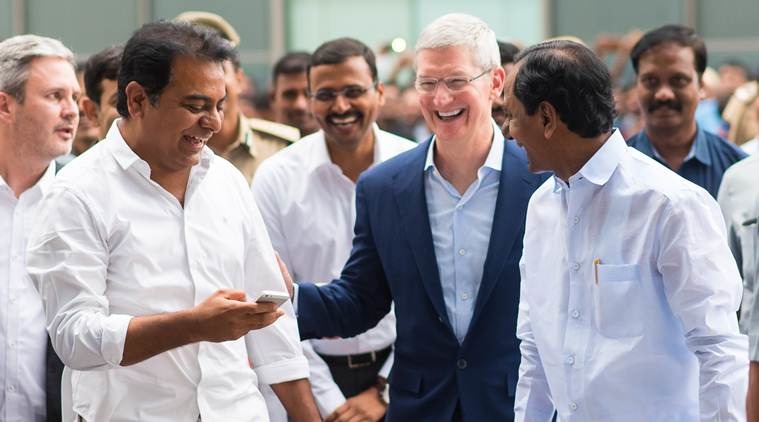The business realities of India as a market have pushed Apple to allow authorized vendors to cut prices dramatically in India on older phones, dating as far back as the iPhone 5.
A report on Monday morning from Bloomberg, citing market research studies, claims that the iPhone 5S, and other older iPhones, make 55 percent of the shipments of Apple devices to India. As part of the initiative, the India market has phones as early as the iPhone 5, all the way up to the iPhone 7 for sale at varying price points from around $200 for the iPhone 5, to $800 and up for the iPhone 7.
Apple is reportedly hiring "affordability managers" in India to make deals with banks and lenders on behalf of buyers of Apple's devices.
"We're very optimistic about our future in this remarkable country," Apple CEO Tim Cook said in May about India. Cook cited "its very large, young, and tech-savvy population, fast-growing economy, and improving 4G network infrastructure" as reasons behind the push into the country.
It is unclear exactly how many of Apple's iPhone SE will be built in the Bangalore plant. Apple previously called the it a "small number" being produced, with the Bloomberg report claiming a "couple thousand" would be built in the trial run.
Also unclear is how the India-produced iPhone SE will be priced. The 32GB variants of the iPhone SE sells for $399 in the United States, third-party resellers in India are selling models assembled in China for as low $320.
A report in May claimed that officials in the Indian government hope the new price for the iPhone SE will drop down by as much as $100 compared to the current local price. Even at a $100 reduction, the iPhone SE would still be seen as expensive compared to the rest of the market, with research firm IDC estimating the average smartphone price in India at around $150.
Apple was pushed into starting handset production in India in order to gain access to the local market with its own stores. As part of local sourcing requirements for launching retail stores in the country, rather than relying on the current network of authorized resellers, Apple would have to source at least 30 percent of its products from India.
 Mike Wuerthele
Mike Wuerthele














 William Gallagher
William Gallagher
 Malcolm Owen
Malcolm Owen


 Andrew Orr
Andrew Orr
 Christine McKee
Christine McKee
 Sponsored Content
Sponsored Content
 Wesley Hilliard
Wesley Hilliard








47 Comments
Gotta get rid of our old stock somehow.📱😉
Why doesn't India figure out ways for people can make more money instead of feeding into this whole notion that you have to lower the cost of an items just so people can afford it. Indian's Middle class is closer to the US poor class. China found ways so its population could earn a higher wage in India they are trying to find ways to pay its people less so they can do jobs which people in the US use to do at a higher wage like IT support, call centers, and so on. IT professional in the US making $80K to $120 is being replaced with someone making $20K to $30K. India managed to devalue a profession down to the work poor class. They doing the same thing with engineering, they produce so many engineers and IT people that it is driving the wages down.
Someone making $20K per year is not going to spend $500 on a phone, then have to pay for cell service and data.
I just hope Apple does not get dragged down in the race to the bottom in India. That country has destroyed more cell phone companies try to compete there.
So Apple admitting price matters in certain markets?